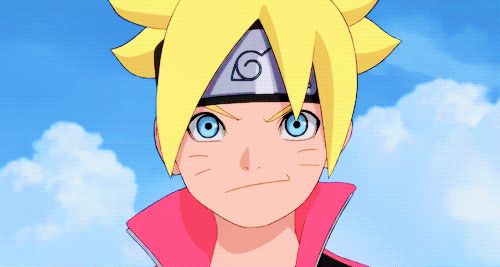After the sulphurous MADK last month, the Yaoi minute presents today one of the flagship titles of the catalog of Taifu comics: 10 Count! This work in six volumes, signed Rihito Takarai, offers us an original and hypnotic scenario, on the borders of the unconscious. Ready for another session?
The story
Tadaomi Shirotani works as the private secretary of the boss of a large Japanese company. If he proves to be efficient and conscientious, his daily life remains difficult, as well as his relationships with others. Indeed, Shirotani suffers from mysophobia, this for many years. This obsessive-compulsive disorder causes him to fear contact with others because of his fear of germs and dirt. Nevertheless, he never sought to start therapy, believing that, since he is not the only mysophobe on earth, there is no reason to cure. However, his resolution will definitely waver when he meets Riku Kurose. The young man turns out to be a psychologist, specializing in obsessive-compulsive disorders and psychosomatic illnesses. Understanding from the outset the seriousness of the secretary's troubles, Kurose urges him to consult. Despite her reluctance, Shirotani agrees to try behavioral therapy with the psychologist to reduce her symptoms. But their relationship quickly goes beyond that between a patient and his caregiver…
Shock treatment
10 Count stands out from other popular works by its unusual subject. Indeed, Rihito Takarai takes great care to introduce us to the character of Shirotani and how his mysophobia affects his daily life. With great compassion, we discover the suffering of the young secretary, who goes so far as to damage his body to respond to his obsessions with cleanliness. He also struggles with strong feelings of guilt, especially when he proves unable to help his superior because of his phobia of contact. The first volume allows us to take the full measure of his disorder, and causes a strong feeling of attachment to this character. The appearance of Kurose is an opportunity for Shirotani to confront his obsessions and try to counter his symptoms. The systematic desensitization therapy put in place is actually used in cognitive behavioral therapies to help the patient overcome his disease. We feel that the mangaka has been well informed; it also highlights how innocuous gestures can be an insurmountable ordeal for someone with OCD. The list of actions established by Shirotani pushes him to go beyond his limits, even if it means being extremely violent. Nevertheless, Rihito Takarai does not avoid failures or relapses, which seem to occur when the secretary is no longer in contact with Kurose… Thus Shirotani gradually becomes dependent on the dark psychologist, whose behavior moves further and further away from that of a caregiver, to take on a new dimension.
The waltz of feelings
10 Count is therefore a particularly realistic manga in the treatment of Shirotani's mental illness. But his other strength is the relationship between the two main characters. Indeed, Shirotani and Kurose unfold together and in mirror throughout the six volumes of the series. If we find a classic dynamic between uke and seme, Rihito Takarai nevertheless goes much further. Thus, the positions of "sadist" and "masochist" initially held respectively by Kurose and Shirotani, vary or even reverse in some chapters. If Kurose is possessive and pushes Shirotani to his limits, both psychic and physical, the latter is just as cruel by refusing the feelings of the psychologist towards him, and by suffocating his own to protect himself. From a classic and dichotomous relationship of dependence, the one presented in 10 Count thus becomes an interdependence, and allows the author to plunge readers into the heart of this dynamic based on the sufferings of each. Kurose and Shirotani complement each other; Each finds in the other what he needs to heal from his traumas. The carnal scenes, beautifully transcribed, are then like so many levers leading to the lifting of painful memories and their resolution. Therefore, their relationship leaves its utilitarian dimension of the beginning to unfold and become sincere and touching. Rihito Takarai's expressive and sensual stroke is thus at the service of his story. Its very recognizable chara-design is part of a game of looks and postures that perfectly conveys the relationship between the two men. The waltz of feelings becomes the waltz of bodies, and vice versa. This pushes the reader to contemplate the pages at length, to decode the sentences and gestures of each. We are then totally immersed in this mature and poignant story that grows and strengthens along with its characters. 10 Count is the story of transformation and fulfillment. This is reflected even on the covers, where the colors orange-pink for Shirotani and cold blue for Kurose end up intertwining in the characters' eyes, demonstrating their mutual evolution! 10 Count, beyond a sensual and graphically controlled narrative, is therefore a powerful and realistic work. Rihito Takarai gives here the full measure of his talent, sparing nothing to his characters but ultimately leading them to a deserved hope and happiness. As the singer Pink would say, the story of this manga is a beautiful trauma, a story of resilience and love that we never tire of rereading! And as happiness never comes alone, after many years of waiting, it seems that the animated version is coming soon! More works by Rihito Takarai: Only the flower knows… (Taifu), Graineliers (Ototo), Fleur et sens (Taifu), The bride of the fox spirit (Taifu), Seven days (Taifu), Welcome to hotel Williams Child Bird (Taifu). To read an excerpt, it's here !















![[Live Report] Rock En Seine 2024 : 20 ans et toujours aussi passionnés !](https://www.justfocus.fr/wp-content/uploads/2024/11/RES24_JOUR01_LANA-DEL-REY_LOUIS-COMAR-12.jpg)





















